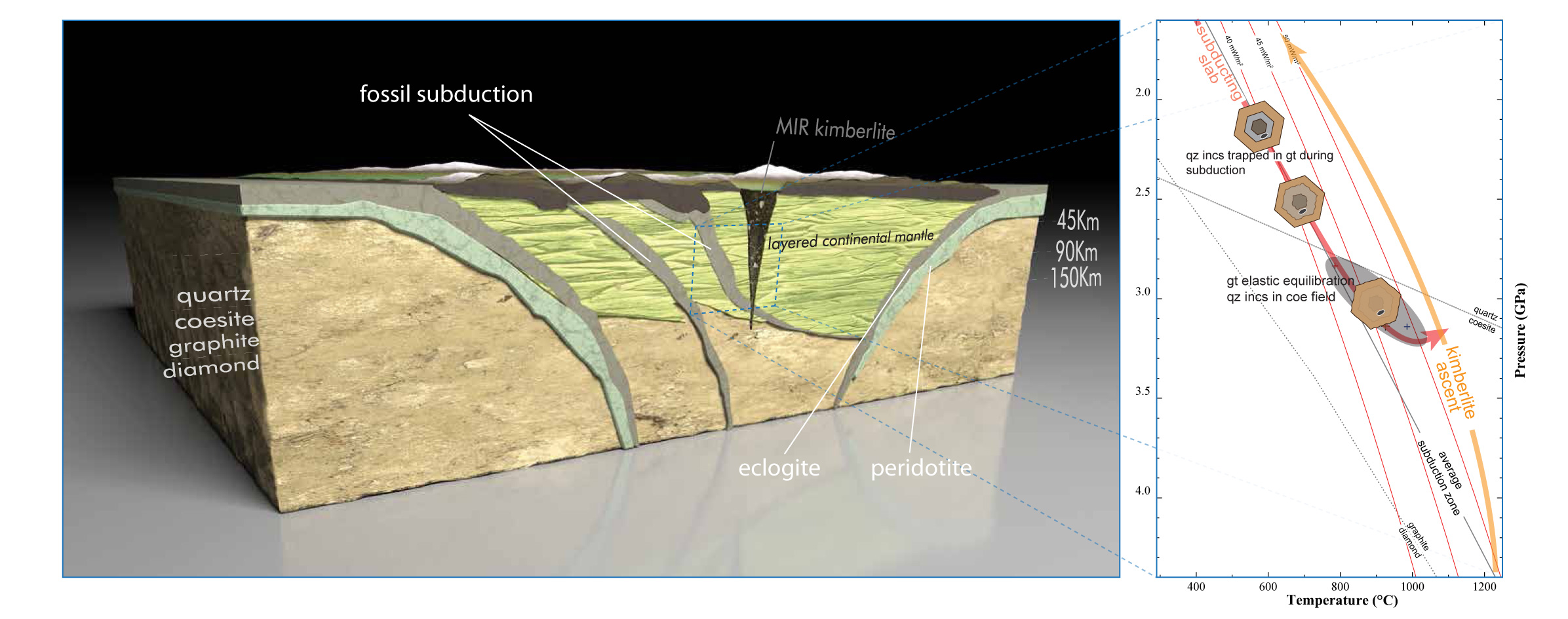Fossil subduction recorded by quartz from the coesite stability field
In his latest paper Matteo Alvaro introduces ad method that exploits the elastic anisotropy of quartz inclusions in garnets to reconstruct the stress state at entrapment and determine the unique P and T of entrapment from a single inclusion in a mineral host. The quartz inclusions we measured turned out to be stable within garnets cores at just at the limit of coesite PT stability conditions.  Here a short abstract to introduce you to the content of the paper just out in Geology “Metamorphic rocks are the records of plate tectonic processes whose reconstruction relies on correct estimates of the pressures and temperatures (P-T) experienced by these rocks through time. Unlike chemical geothermobarometry, elastic geobarometry does not rely on chemical equilibrium between minerals, so it has the potential to provide information on overstepping of reaction boundaries and to identify other examples of non-equilibrium behavior in rocks. Here we introduce a method that exploits the anisotropy in elastic properties of minerals to determine the unique P and T of entrapment from a single inclusion in a mineral host. We apply it to preserved quartz inclusions in garnet from eclogite xenoliths hosted in Yakutian kimberlites (Russia). Our results demonstrate that quartz trapped in garnet can be preserved when the rock reaches the stability field of coesite (the high-pressure and hightemperature polymorph of quartz) at 3 GPa and 850 °C. This supports a metamorphic origin for these xenoliths and sheds light on the mechanisms of craton accretion from a subducted crustal protolith. Furthermore, we show that interpreting P and T conditions reached by a rock from the simple phase identification of key inclusion minerals can be misleading.
Here a short abstract to introduce you to the content of the paper just out in Geology “Metamorphic rocks are the records of plate tectonic processes whose reconstruction relies on correct estimates of the pressures and temperatures (P-T) experienced by these rocks through time. Unlike chemical geothermobarometry, elastic geobarometry does not rely on chemical equilibrium between minerals, so it has the potential to provide information on overstepping of reaction boundaries and to identify other examples of non-equilibrium behavior in rocks. Here we introduce a method that exploits the anisotropy in elastic properties of minerals to determine the unique P and T of entrapment from a single inclusion in a mineral host. We apply it to preserved quartz inclusions in garnet from eclogite xenoliths hosted in Yakutian kimberlites (Russia). Our results demonstrate that quartz trapped in garnet can be preserved when the rock reaches the stability field of coesite (the high-pressure and hightemperature polymorph of quartz) at 3 GPa and 850 °C. This supports a metamorphic origin for these xenoliths and sheds light on the mechanisms of craton accretion from a subducted crustal protolith. Furthermore, we show that interpreting P and T conditions reached by a rock from the simple phase identification of key inclusion minerals can be misleading.
